National plants
Africa
Mauritius
The national flower of Mauritius is ''Trochetia boutoniana''.Seychelles
The national flower of the Seychelles is the tropicbird orchid (known locally as ''orkid payanke''), ''Angraecum eburneum''.South Africa
The national flower of South Africa is the Protea cynaroides, King Protea, ''Protea cynaroides''.Tunisia
The national flower of Tunisia is jasmine. It was chosen as a symbol for the Tunisian Revolution, 2010 Tunisian Revolution.Asia
Bangladesh
The national flower of Bangladesh is the Nymphaeaceae, water lily ''Nymphaea nouchali''. It is called ''Shapla'' (শাপলা) in the Bengali language.Bhutan
The national flower of Bhutan is the blue poppy. Previously misidentified as the non-native ''Meconopsis grandis'', national flower of Bhutan was identified in 2017 as ''Meconopsis gakyidiana'', a new distinct species.Brunei
The national flower of Brunei is Simpoh Ayer (''Dillenia suffruticosa'').Cambodia
 Cambodia formally adopted the ''romduol'' ( km, រំដួល) as its national flower in the year 2005 by a royal decree. The royal decree designates the taxon as ''Mitrella mesnyi'', however, this is a taxonomically illegitimate synonym for ''Sphaerocoryne affinis''.
Cambodia formally adopted the ''romduol'' ( km, រំដួល) as its national flower in the year 2005 by a royal decree. The royal decree designates the taxon as ''Mitrella mesnyi'', however, this is a taxonomically illegitimate synonym for ''Sphaerocoryne affinis''.
Hong Kong
The symbolic flower of Hong Kong is the Hong Kong orchid tree ("洋紫荊"), ''Bauhinia blakeana''.India
The national flower of India is the lotus flower ''(Nelumbo nucifera)''. It is a sacred flower and occupies a unique position in the art and mythology of ancient India and has been an auspicious symbol of Indian culture since time immemorial.Indonesia
 There are three types of floral emblems used to symbolize Indonesia:
* The ''puspa bangsa'' ("national flower") of Indonesia is ''Jasminum sambac, melati'' (''Jasminum sambac'').
* The ''puspa pesona'' ("flower of charm") is ''anggrek bulan'' or moon orchid (''Phalaenopsis amabilis'').
* The ''puspa langka'' ("rare flower") is ''padma raksasa rafflesia'' (''Rafflesia arnoldii'').
All three were chosen on World Environment Day in 1990, and enforced by law through Presidential Decree (''Keputusan Presiden'') No. 4 1993, On the other occasion, ''Bunga Bangkai'' (''Titan arum'') was also added as ''puspa langka'' together with ''Rafflesia''.
''Melati'' (''Jasminum sambac''), a small white flower with sweet fragrance, has long been considered a sacred flower in Culture of Indonesia, Indonesian tradition, as it symbolizes purity, sacredness, graceful simplicity and sincerity. For example, on her wedding day, a traditional Indonesian bride's hair is often adorned with arrangements of jasmine, while the groom's kris is often adorned with a lock of jasmine. However, jasmine is also often used as a floral offering for spirits and deities, and also often present during funerals, which has caused it to be seen as having mystical and sacred properties. Moon orchid was chosen for its beauty, while the other two rare flowers, ''Rafflesia arnoldii'' and ''Titan arum'', were chosen to demonstrate uniqueness and Indonesia's rich biodiversity.
Each of the 34 provinces of Indonesia also has a native plant as its List of Indonesian floral emblems, provincial flower.
There are three types of floral emblems used to symbolize Indonesia:
* The ''puspa bangsa'' ("national flower") of Indonesia is ''Jasminum sambac, melati'' (''Jasminum sambac'').
* The ''puspa pesona'' ("flower of charm") is ''anggrek bulan'' or moon orchid (''Phalaenopsis amabilis'').
* The ''puspa langka'' ("rare flower") is ''padma raksasa rafflesia'' (''Rafflesia arnoldii'').
All three were chosen on World Environment Day in 1990, and enforced by law through Presidential Decree (''Keputusan Presiden'') No. 4 1993, On the other occasion, ''Bunga Bangkai'' (''Titan arum'') was also added as ''puspa langka'' together with ''Rafflesia''.
''Melati'' (''Jasminum sambac''), a small white flower with sweet fragrance, has long been considered a sacred flower in Culture of Indonesia, Indonesian tradition, as it symbolizes purity, sacredness, graceful simplicity and sincerity. For example, on her wedding day, a traditional Indonesian bride's hair is often adorned with arrangements of jasmine, while the groom's kris is often adorned with a lock of jasmine. However, jasmine is also often used as a floral offering for spirits and deities, and also often present during funerals, which has caused it to be seen as having mystical and sacred properties. Moon orchid was chosen for its beauty, while the other two rare flowers, ''Rafflesia arnoldii'' and ''Titan arum'', were chosen to demonstrate uniqueness and Indonesia's rich biodiversity.
Each of the 34 provinces of Indonesia also has a native plant as its List of Indonesian floral emblems, provincial flower.
Iran
 The national flower of Iran is the water lily which is also called nymphaea (''Niloofare Abi'', in Persian language, Persian). The flower is the national flower of Iran since the Achaemenid Empire era (552 BC).
The national flower of Iran is the water lily which is also called nymphaea (''Niloofare Abi'', in Persian language, Persian). The flower is the national flower of Iran since the Achaemenid Empire era (552 BC).
Israel
 The national flower of Israel is the poppy anemone (''Anemone coronaria''; ''calanit metzuya'' in Hebrew), chosen in 2013 to replace ''Cyclamen persicum''.הכלנית: הזוכה בתחרות "הפרח של ישראל"
The national flower of Israel is the poppy anemone (''Anemone coronaria''; ''calanit metzuya'' in Hebrew), chosen in 2013 to replace ''Cyclamen persicum''.הכלנית: הזוכה בתחרות "הפרח של ישראל"ynet, November 25th, 2013.
Jordan
The national flower of Jordan is Iris nigricans, Black iris ''(Iris nigricans)''.Laos
The national flower of Laos is the plumeria (''champa''), despite it no longer being endemic.Malaysia
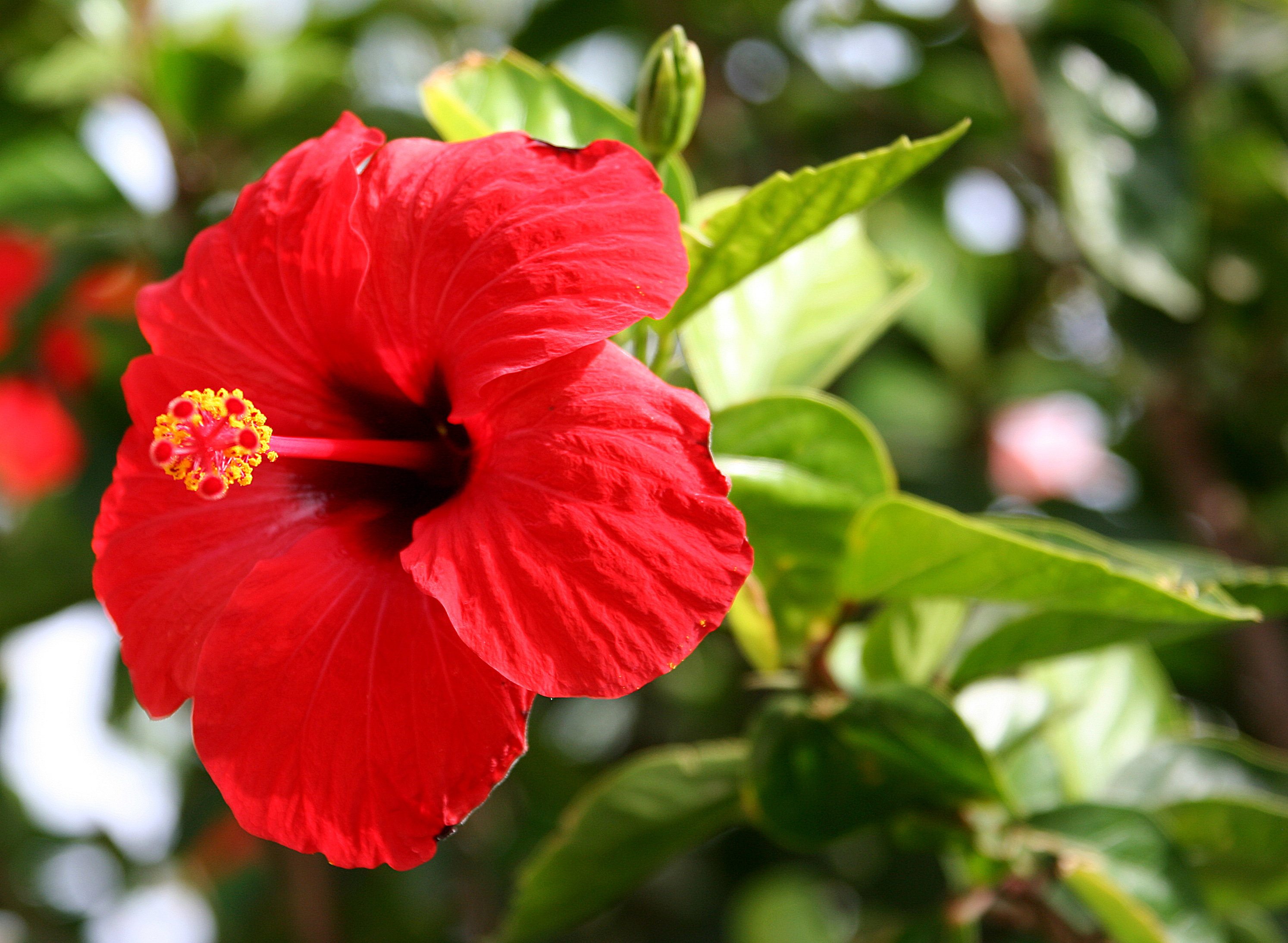 The national flower of Malaysia is the ''bunga raya'' (Chinese hibiscus, ''Hibiscus rosa-sinensis'').
The national flower of Malaysia is the ''bunga raya'' (Chinese hibiscus, ''Hibiscus rosa-sinensis'').
Maldives
The national flower of the Maldives is the pink polyantha rose (''Rosa polyantha''), called ''fiyaathoshi finifenmaa''.Mongolia
The national flower of Mongolia is ''Scabiosa comosa'' ( mn, бэр цэцэг, ''ber tsetseg'').Myanmar
The national flower of Myanmar is ''Pterocarpus indicus'' (''paduak'').Nepal
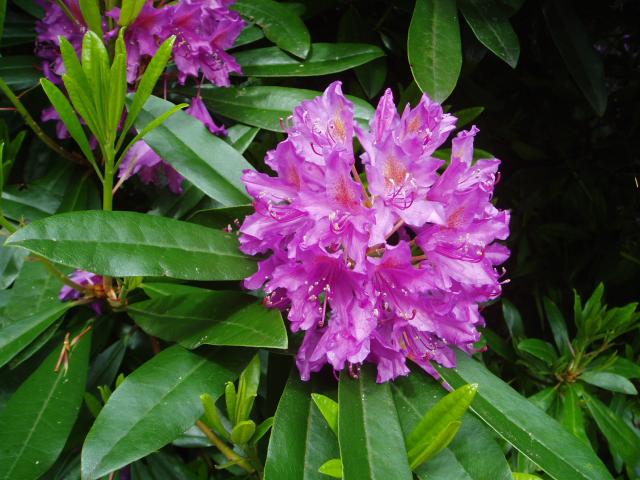 The national flower of Nepal is the rhododendron.
The national flower of Nepal is the rhododendron.
North Korea
The national flower of North Korea is the Korean mountain magnolia (''Magnolia sieboldii'', Korean Language, Korean: 목란/ ''mongnan''). Pakistan The national flower of Pakistan is Jasminum officinale, common jasmine also known as ''Jasminum officinale.''Philippines
The Philippines adopted the ''sampaguita'' (Arabian jasmine, ''Jasminum sambac'') in 1934 as its national flower because it symbolises purity and cleanliness due to its colour and sweet smell. It is popularly strung into garlands that are presented to visitors and dignitaries, and is a common offering to religious images. Sampaguita in Filipino language is a direct loan word from the Indian sanskrit word "campaka".William Henry Scott (historian), William Henry Scott, 1984Prehispanic Source Materials for the Study of Philippine History
accessed 1 July 2021.Jean-Paul G. POTET, 2013, Arabian and Persian loanwords in Tagalog, p. 250. Plants of some species of flowers like sampaguita, fruits like Mango#Production, mango and Jackfruit, nangka, vegetables like Momordica charantia, ampalaya, Luffa, patola, Moringa oleifera, malunggay, name of Philippine's pre-Christian chief god Bathala (from sanskrit ''Batara Guru, Bhattara Guru''), came from India during pre-Spanish Indianisation, Indianised Indian influences in early Philippine polities, trade and influences.M.c. Halili, 2004
Philippine History
Rex Bookstore, p. 49. Among strong traces of continuity of List of India-related topics in the Philippines, Hindu influence in Philippines are placing of sampaguita garland around the neck of visitors to show hospitality and friendship, Marriage and wedding customs in the Philippines#Wedding ceremony, throwing the rice over bride and groom for prosperity, performing Courtship in the Philippines, paninilbihan, paying dowry, visiting a shrine to pray for fertility, etc.Cecilio D. Duka, 2008
Struggle for Freedom
Rex Bookstore, p. 35.
Singapore
The national flower of Singapore is a hybrid orchid cultivar known as the Singapore orchid or Vanda 'Miss Joaquim', Vanda Miss Joaquim (''Papilionanthe teres'' × ''Papilionanthe hookeriana'').South Korea
The national flower of South Korea is ''Hibiscus syriacus''. Known in South Korea as ''mugunghwa'' (Korean language, Korean: 무궁화), the flower's symbolism relates to the Korean word ''mugung'', which means "eternity" or "inexhaustible abundance". Despite being made the national flower officially after Korea regained its independence from Japan, ''mugunghwa'' has been associated with Korean culture for many centuries, with the Silla kingdom having called itself the "Country of the Mugunghwa" (Korean: 근화향, Romanized: ''Geunhwahyang'').Sri Lanka
 The national flower of Sri Lanka is ''Nil mānel'' (නිල් මානෙල්), the blue-star water-lily (''Nymphaea stellata''). Although ''nil'' means "blue" in Sinhala language, Sinhala, the Sinhalese name of this plant is often rendered as "water-lily" in English. This beautiful aquatic flower appears in the Sigiriya frescoes and has been mentioned in ancient Sanskrit, Pali and Sinhala literary works. Buddhist lore in Sri Lanka claims that this flower was one of the 108 auspicious signs found on Prince Gautama Buddha, Siddhartha's footprint.
The national flower of Sri Lanka is ''Nil mānel'' (නිල් මානෙල්), the blue-star water-lily (''Nymphaea stellata''). Although ''nil'' means "blue" in Sinhala language, Sinhala, the Sinhalese name of this plant is often rendered as "water-lily" in English. This beautiful aquatic flower appears in the Sigiriya frescoes and has been mentioned in ancient Sanskrit, Pali and Sinhala literary works. Buddhist lore in Sri Lanka claims that this flower was one of the 108 auspicious signs found on Prince Gautama Buddha, Siddhartha's footprint.
Taiwan
The national flower of the Republic of China was officially designated as the plum blossom by the Executive Yuan on 21 July 1964.Government Information Office, Republic of China - National FlowerThe plum blossom, known as the ''meihua'' (), is a symbol of resilience and perseverance in the face of adversity, because plum trees often bloom most vibrantly even during the harshest winters. The triple grouping of stamens represents Dr. Sun Yat-sen's Three Principles of the People, while the five petals symbolize the five branches of the government.National Flag, Anthem and Flower
/ref>
Thailand
The national flower of Thailand is the Golden Shower Tree (''Cassia fistula''), locally known as ''dok khuen'' or ''rachapruek''.Europe
Andorra
*Andorra– Narcissus poeticusAustria
The national flower of Austria is Leontopodium nivale, edelweiss (''Leontopodium nivale'').Belgium
*Brussels – ''Iris pseudacorus'' *Flanders – poppy *Wallonia – ''Gaillardia''Bulgaria
*Bulgaria – roseCroatia
*Croatia – ''Iris croatica'' (unofficial)Cyprus
*Cyprus – ''Cyclamen cyprium''Czech Republic
*Czech Republic – ''Tilia''Denmark
*Denmark – red clover (''Trifolium pratense'') and marguerite daisy (''Argyranthemum frutescens''). The latter is often modified to oxeye daisy (''Leucanthemum vulgare''), a rather similar species that is native to the country (the marguerite daisy is not)Estonia
*Estonia – cornflowerFinland
*Finland – lily of the valleyFrance
*Brittany – ''Ulex'' and Calluna, heather (''Calluna'')Guernsey
*Guernsey – ''Nerine sarniensis''Iceland
*Iceland – White dryad (''Dryas octopetala'')Lithuania
*Lithuania – rueJames Minahan. ''The complete guide to national symbols and emblems, Vol. 1''. Greenwood Press. 2009.Northern Ireland
* Northern Ireland – Flax, flax flower, Clover, clover leafPoland
*Poland – Papaver rhoeas, red poppy *Kashubia – Vicia cassubica, Kashubian vetchPortugal
Portugal does not officially have a national flower, though the lavender is commonly cited. The Dianthus caryophyllus, carnation (''Dianthus caryophyllus'') is also a symbol of the nation's triumph against the authoritarian far-right Estado Novo (Portugal), Estado Novo dictatorship, known as the Carnation Revolution.Romania
The national flower of Romania is peony.Russia
The national flower of Russia is chamomile.Serbia
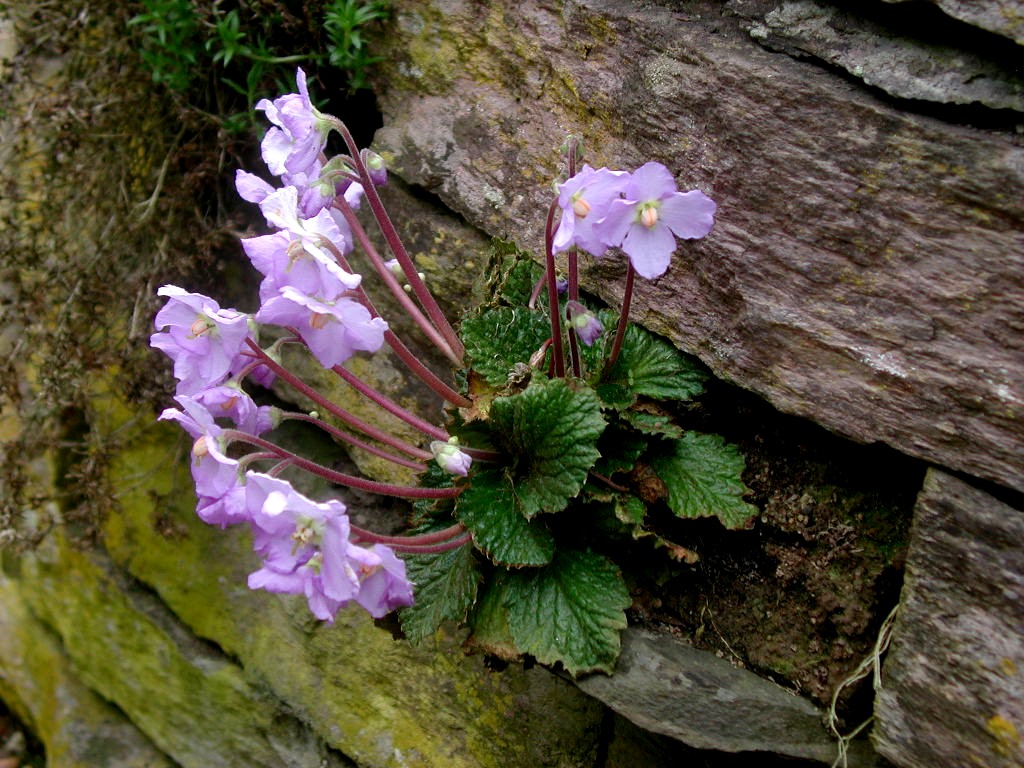
 The national flowers of Serbia are Ramonda nathaliae, Natalie's ramonda (''Ramonda nathaliae'') and Ramonda serbica, Serbian ramonda (''Ramonda serbica''). The flowers are considered symbolс of the Serbian Army's struggle during World War I, as well as the resurrection of the Serbian state after the devastating war. To commemorate their victims, people in Serbia wear Natalie's ramonda as a symbol of remembrance, especially during Armistice Day, which is a statutory holiday in Serbia since 2012. Natalie's ramonda was named after Natalie of Serbia, Queen Natalija Obrenović, while Serbian ramonda is also known as the Serbian phoenix flower, due to its ability to be revived when watered, even when fully dehydrated.
The national flowers of Serbia are Ramonda nathaliae, Natalie's ramonda (''Ramonda nathaliae'') and Ramonda serbica, Serbian ramonda (''Ramonda serbica''). The flowers are considered symbolс of the Serbian Army's struggle during World War I, as well as the resurrection of the Serbian state after the devastating war. To commemorate their victims, people in Serbia wear Natalie's ramonda as a symbol of remembrance, especially during Armistice Day, which is a statutory holiday in Serbia since 2012. Natalie's ramonda was named after Natalie of Serbia, Queen Natalija Obrenović, while Serbian ramonda is also known as the Serbian phoenix flower, due to its ability to be revived when watered, even when fully dehydrated.
Slovakia
* Slovakia – ''Tilia''Spain
The national flower of Spain is the red carnation.Sweden
The national flower of Sweden is Campanula rotundifolia, known as ''small bluebell''. It won a public vote in 2021.Switzerland
The national flower of Switzerland is Leontopodium nivale, edelweiss (''Leontopodium nivale'').United Kingdom
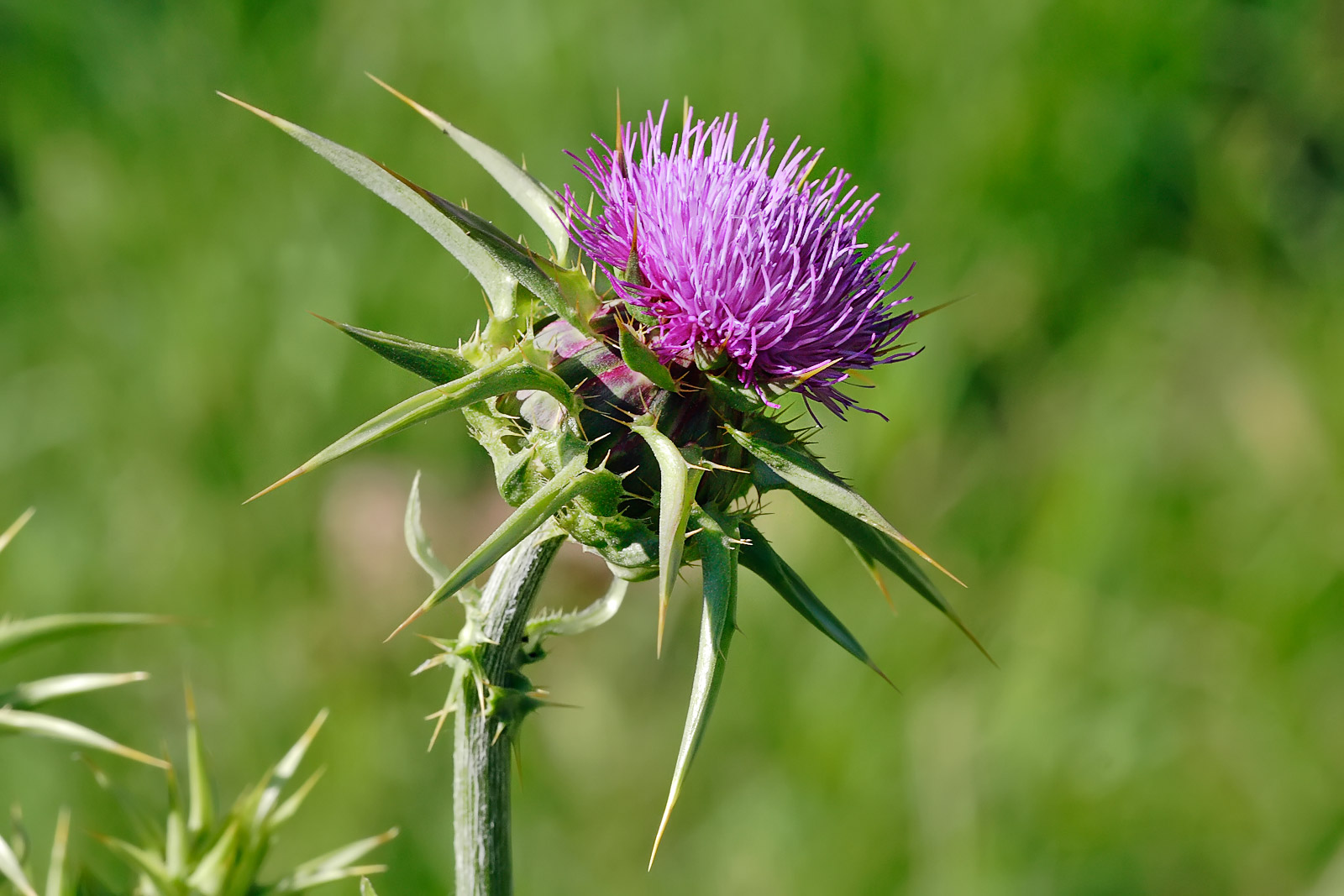 Each of the United Kingdom's four constituent countries has one or more national flower:
* England – Tudor rose
* Wales – daffodil, leek
* Northern Ireland – Flax, flax flower, Clover, clover leaf
* Scotland – thistle, Scots pine
Each of the United Kingdom's four constituent countries has one or more national flower:
* England – Tudor rose
* Wales – daffodil, leek
* Northern Ireland – Flax, flax flower, Clover, clover leaf
* Scotland – thistle, Scots pine
Ukraine
The national flower of Ukraine is ''Viburnum'', cherry, or sunflower.North America
Canada
The maple leaf is widely used as a symbol for Canada. The maple tree was officially recognized as Canada's arboreal emblem in 1996. Canada's provinces and territories also have official provincial or territorial floral emblems: * Ontario: white trillium (''Trillium grandiflorum''), adopted in 1937. * Quebec: Iris versicolor, blue flag (''Iris versicolor''), adopted in November 1999. * Nova Scotia: Epigaea repens, mayflower (''Epigea repens''), adopted in 1901. * New Brunswick: purple violet (''Viola cucullata''), adopted in 1936. * Manitoba: prairie crocus (''Pulsatilla ludoviciana''), adopted in 1906. * British Columbia: Pacific dogwood (''Cornus nuttallii''), adopted in 1956. * Prince Edward Island: Cypripedium acaule, lady's slipper (''Cypripedium acaule''), a species of orchid, adopted in 1947. * Saskatchewan: western red lily (''Lilium philadelphicum'' var. ''andinum''), adopted in 1941. * Alberta: wild rose (''Rosa acicularis''), also known as the prickly rose, adopted in 1930. * Newfoundland and Labrador: northern pitcher plant (''Sarracenia purpurea''), adopted in 1954. It was first chosen as a symbol of Newfoundland by Queen Victoria, and was used on the island's coinage until 1938. * Northwest Territories: mountain avens (''Dryas octopetala''), adopted in 1957. * Yukon: fireweed (''Epilobium angustifolium''), adopted in 1957. * Nunavut: purple saxifrage (''Saxifraga oppositifolia''), unanimously adopted by the Legislative Assembly of Nunavut on May 1, 2000. Many Canadian flags and coats-of-arms have floral emblems on them. The flag of Montreal has four floral emblems. On the right side of the flag of Saskatchewan overlapping both green and gold halves is the western red lily, the provincial floral emblem. The coat of arms of Port Coquitlam has the city's floral emblem, the azalea, displayed on a collar. The coat of arms of Prince Edward Island displays lady's slippers, the floral emblem of the island. When coat of arms of Nova Scotia were reassumed in 1929, the trailing arbutus or mayflower, the floral emblem of Nova Scotia, was added.Mexico
The national flower of Mexico is the dahlia (''Dahlia pinnata'').United States
In 1986, President Ronald Reagan signed legislation to make the rose the national floral emblem of the United States. In each of the U.S. states, List of U.S. state and territory flowers, state flowers and List of U.S. state trees, trees have also been adopted as symbols by state legislatures.Central America and the Caribbean
Antigua and Barbuda
The national flower of Antigua and Barbuda is ''Agave karatto'', also known as "dagger log" or "batta log".The Bahamas
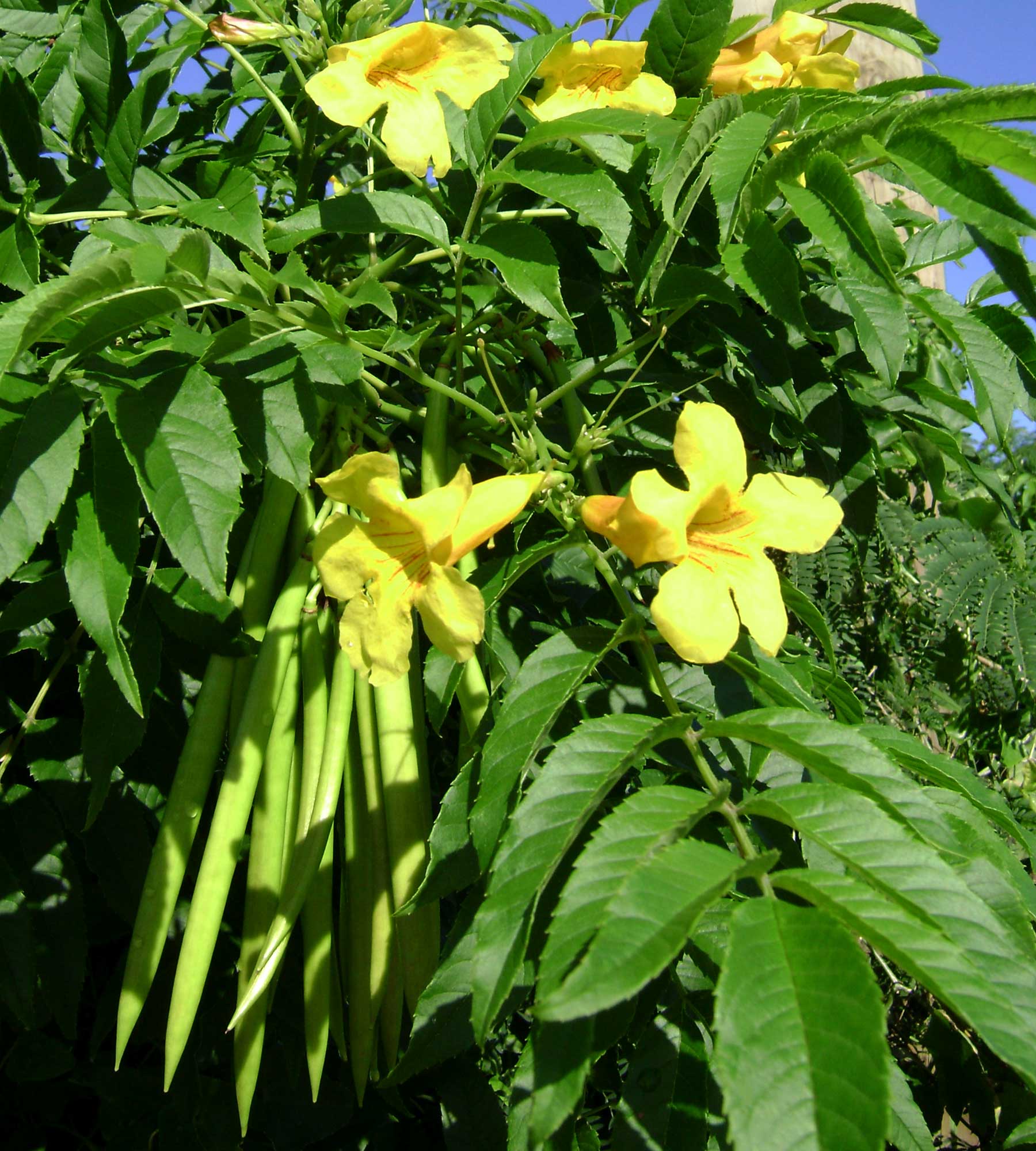 The national flower of the Bahamas is the Yellow Elder (''Tecoma stans'').
The national flower of the Bahamas is the Yellow Elder (''Tecoma stans'').
Barbados
The national flower of Barbados is known locally as the Pride of Barbados (''Caesalpinia pulcherrima'').Belize
The national flower of Belize is the black orchid (''Prosthechea cochleata'').Costa Rica
The national flower of Costa Rica is the ''guaria morada'' (''Guarianthe skinneri'').Cuba
The national flower of Cuba since October 13, 1936, is the ''Hedychium coronarium, white ginger lily.''Dominica
The national flower of Dominica is ''Poitea carinalis, Sabinea carinalis'', commonly known as Carib wood or ''Bois Caraibe''.Dominican Republic
Guatemala
The national flower of Guatemala is the ''monja blanca'' (''Lycaste skinneri'' var. ''alba'').Haiti
 The national flower of Haiti is the ''Choeblack'' or ''rose kayenn'' (''Hibiscus'').Embassy of the Republic of Haiti: National Symbols
The national flower of Haiti is the ''Choeblack'' or ''rose kayenn'' (''Hibiscus'').Embassy of the Republic of Haiti: National SymbolsHonduras
The national flower of Honduras is the orchid ''Rhyncholaelia digbyana''.Jamaica
The national flower of Jamaica is the lignum vitae (''Guaiacum officinale'').Oceania


Australia
Golden Wattle (''Acacia pycnantha'') was officially proclaimed the floral emblem of Australia on 1 September 1988.French Polynesia
The Tahitian gardenia (tiare flower) is the national flower of Tahiti, French Polynesia, and the Cook Islands.Fiji
The national flower of Fiji is ''tagimaucia'' (''Medinilla waterhousei''), a vine with red and white flowers endemic to the highlands of the island of Taveuni.New Zealand
New Zealand does not have an official national flower, but the silver fern (foliage) is acknowledged as its national emblem. The Kowhai (''Sophora'' spp., native trees with yellow cascading flowers) is usually regarded as the national flower. Other plant emblems are Koru (a curled fern symbol) and the crimson-flowered Pohutukawa (''Metrosideros excelsa''), also called New Zealand's Christmas tree.Tonga
The ''heilala'' (''Garcinia sessilis'') is Tonga's national flower. The name of Tonga's beauty pageant, the Heilala Festival, is taken from this flower. Resorts as well as consumer products are also often named after this flower, such as the Heilala Lodge and Heilala Vanilla. The flower is also used in Tonga for medicinal and ornamental purposes.South America
Argentina
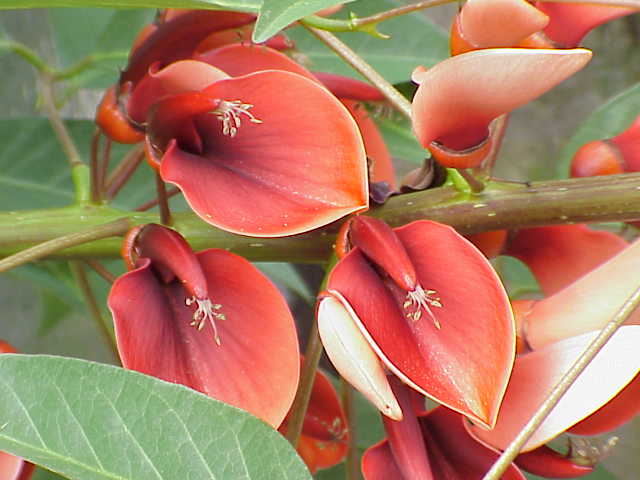 The national flower of Argentina is the flower of the Erythrina crista-galli, ceibo tree (''Erythrina crista-galli''), also known as ''seibo'' or ''bucaré''.
The national flower of Argentina is the flower of the Erythrina crista-galli, ceibo tree (''Erythrina crista-galli''), also known as ''seibo'' or ''bucaré''.
Bolivia
Bolivia has two national flowers: the ''kantuta'' (''Cantua buxifolia'') and ''patujú'' (''Heliconia rostrata'').Brazil
The national flower of Brazil is the flower of the golden trumpet tree (''Handroanthus albus'').Chile
 The national flower of Chile is the copihue (''Lapageria rosea'').
The national flower of Chile is the copihue (''Lapageria rosea'').
Colombia
''Cattleya trianae'' is the national flower of Colombia and is the orchid which flowers in May. The May flower was chosen because the colors are the same as those of the Flag of Colombia, Colombian flag.Guyana
The national flower of Guyana is the Victoria amazonica, Victoria regia lily (''Victoria amazonica'').Peru
The national flower of Peru is the cantuta (also spelled ''kantuta'' or ''qantuta'', from Quechua language, Quechua ''qantu''). It can be found in the high valleys of the Andes in Peru and Bolivia.Paraguay
The national flower of Paraguay is Passiflora, Mburucuyá.Suriname
Called ''faya lobi'' ("fiery love") in Sranantongo, the jungle geranium (''Ixora coccinea'') is commonly considered a symbol of Suriname.Uruguay
 The national flower of Uruguay is the flower of the Erythrina crista-galli, ceibo tree (''Erythrina crista-galli'').
The national flower of Uruguay is the flower of the Erythrina crista-galli, ceibo tree (''Erythrina crista-galli'').
Venezuela
The national flower of Venezuela is the ''Flor de Mayo'' (''Cattleya mossiae''), an orchid.Subnational plants
Australia
*Australian Capital Territory – Royal Bluebell (''Wahlenbergia gloriosa'') *New South Wales – New South Wales Waratah (''Telopea speciosissima'') *Northern Territory – Sturt's Desert Rose (''Gossypium sturtianum'') *Queensland – Cooktown Orchid (''Dendrobium phalaenopsis'') *South Australia – Sturt's Desert Pea (''Swainsona formosa'') *Tasmania – Tasmanian Blue Gum (''Eucalyptus globulus'') *Victoria – Pink (Common) Heath (''Epacris impressa'') *Western Australia – Red and Green Kangaroo Paw (''Anigozanthos manglesii'')Norway
* Lily-of-the-valley was chosen as the county flower of Østfold * Globe flower is the county flower of TromsPakistan
*Islamabad Capital Territory – Hybrid Tea Rose (''All Varieties'') *Balochistan – Wild Woodland Tulip (''Tulipa sylvestris'') *Khyber Pakhtunkhwa – Lady's Tulip (''Tulipa clusiana'') *The Punjab – Sadabahar (''Catharanthus roseus'') *Sindh – Sindhi Lotus (''Nelumbo indica'') *Gilgit–Baltistan – Alpine Blue Star (''Aquilegia coerulea'') *Azad Jammu and Kashmir – Pink Snow Rose (''Rhododendron ferrugineum'')United Kingdom
County flowers
A county flower is a flowering plant chosen to symbolise a county. They exist primarily in the United Kingdom, but some counties in other countries also have them. One or two county flowers have a long history in England – the red rose of Lancashire dates from the Middle Ages, for instance. However, the county flower concept was only extended to cover the whole United Kingdom in 2002, as a promotional tool by a charity. In that year, the plant conservation charity Plantlife ran a competition to choose county flowers for all counties, to celebrate the Golden Jubilee of Elizabeth II, Golden Jubilee of Elizabeth II of the United Kingdom, Queen Elizabeth II. Plantlife's scheme is loosely based on Britain's Counties of the United Kingdom, historic counties, and so some current Local government of the United Kingdom, local government areas are not represented by a flower, and some of the counties included no longer exist as administrative areas. Flowers were also chosen for thirteen major cities: Belfast, Birmingham, Bristol, Cardiff, Edinburgh, Glasgow, Leeds, Liverpool, London, Manchester, Newcastle upon Tyne, Nottingham and Sheffield. The Isles of Scilly was also treated as a county (distinct from Cornwall) for the purpose of the scheme. The Isle of Man was included, even though it is not a county, but a self-governing territory outside of the United Kingdom with an existing national flower: the ragwort or ''cushag''. The Channel Islands were not included. A total of 94 flowers was chosen in the competition. 85 of the 109 counties have a unique county flower, but several species were chosen by more than one county. Digitalis purpurea, Foxglove or ''Digitalis purpurea'' was chosen for four counties – Argyll, Birmingham, Leicestershire and Monmouthshire (historic), Monmouthshire – more than any other species. The following species were chosen for three counties each: * Bog Rosemary ''Andromeda polifolia'' (Ceredigion, Cardiganshire, Kirkcudbrightshire, Kirkcudbright and County Tyrone, Tyrone) * Primula veris, Cowslip ''Primula veris'' (Northamptonshire, Surrey and Worcestershire) * Harebell ''Campanula rotundifolia'' (County Antrim, Antrim, Dumfriesshire and Yorkshire) * Armeria maritima, Thrift ''Armeria maritima'' (County of Bute, Buteshire, Pembrokeshire and the Isles of Scilly) And the following species were chosen for two counties: * Grass-of-parnassus ''Parnassia palustris'' (Cumberland and Sutherland) * Pasqueflower ''Pulsatilla vulgaris'' (Cambridgeshire and Hertfordshire) * Common Poppy ''Papaver rhoeas'' (Essex and Norfolk) In addition, Lychnis viscaria, Sticky Catchfly ''Lychnis viscaria'' was chosen for both Edinburgh and Midlothian, the county containing Edinburgh. For most counties, Indigenous (ecology), native species were chosen, but for a small number of counties, alien (biology), non-natives were chosen, mainly archaeophytes.Unofficial plants
Armenia
No plant or flower seems to be among the current official symbols. Some flowering plants from the area include ''Althaea armeniaca'', Armenian Basket, ''Muscari armeniacum'', Armenian Poppy, Armenian vartig (vargit), and ''Tulipa armena''.Azerbaijan
Azerbaijan currently has no official national flower. Traditionally, various regions have different designations where national symbols are concerned. The city of Shusha named the Khari Bulbul (''Ophrys caucasica'') the floral emblem of the Nagorno-Karabakh.Belarus
The unofficial national flower of Belarus is wild blue flax, ''Centaurea''.China
China currently has no official national flower. Traditionally, various regions have different designations where national symbols are concerned. In 1903, the Qing dynasty named the Paeonia suffruticosa, peony () the floral emblem of the nation. The peony has long been considered a flower of wealth and honor in China. The puppet state Manchukuo followed Japan's model of dual floral emblems: the "spring orchid" (Cymbidium goeringii) for the Emperor and the imperial household, and the sorghum blossom (Sorghum bicolor) for the state and the nation. The plum blossom, ''meihua'' (), has also been one of the most beloved flowers in Chinese culture. The Republic of China government named the plum blossom as the national flower in 1964. The plum blossom is symbol for resilience and perseverance in the face of adversity, because plum blossoms often bloom most vibrantly even amidst the harsh winter snow. The People's Republic of China, which has controlled mainland China since 1949, has no official floral emblem. There have been several petitions in recent years to officially adopt one. However, the government has not taken any action yet. A poll in 2005 showed that 41% of the public supports peony as the national flower while 36% supported the plum blossom. Some scholars have suggested that the peony and plum blossoms may be designated as dual national flowers. In addition, the orchid, jasmine, daffodil and chrysanthemum have also been held as possible floral symbols of China.Ecuador
No flower has been officially declared as a national symbol. Unofficially the rose and the orchid are claimed to hold that title.Egypt
Both Nymphaea caerulea, Blue Egyptian Lotus and Nymphaea lotus, White Egyptian Lotus are regarded as Egypt's national flowers, and they appear in many Ancient Egyptian paintings and monuments.Guinea
In a 2018 public vote ''Vernonia djalonensis'' was voted as the national flower of Guinea, a decision which is currently awaiting government approvalItaly
Italy doesn't have an official floral emblem, though the Lily lilium is commonly cited. Other less common options are the Rose and the White poppy.Japan
Japan's national government has never formally named a national flower, as with other symbols such as the green pheasant, which was named as national bird by a non-government body in 1947. In 1999, the Hinomaru, national flag and Kimigayo, anthem were Act on National Flag and Anthem (Japan), standardised by law. A ''de facto'' national flower for Japan for many is the ''sakura'' (cherry blossom), while a stylised depiction of a Chrysanthemum morifolium is used as the official Mon (emblem), emblem of the Imperial House of Japan, imperial family (Imperial Seal of Japan). The Paulownia blossom was also used by the imperial family in the past, but has since been appropriated by the Prime Minister of Japan, Prime Minister and the Government of Japan, government in general (Government Seal of Japan).Netherlands
While the Netherlands does not have an official national flower, the tulip is widely considered to be its national flower.France
While France does not have an official national flower, the fleur-de-lis, which was a symbol of the royal family, as well as the Centaurea cyanus, cornflower (blue), Argyranthemum frutescens, marguerite (white), and Papaver rhoeas, red poppy, which together represent the tri-colored Flag of France, national flag, are also generally treated as French national flowers.Vietnam
While Vietnam does not have an official flower, four plants are traditional regarded as the ''four graceful plants'', namely: the lotus, the pine, bamboo, and the chrysanthemum. The lotus (''Nelumbo nucifera'') is generally regarded as the unofficial national flower of Vietnam, as portrayed, for example, on their postage stamps.Scott #874 and #875 show the lotus and flag, respectively, in honor of the first unified National Assembly general elections of 1976. , and again the flag and lotus are on the bicentennial issue Scot #3233, In Vietnamese tradition, the lotus is regarded as ''the symbol of purity, commitment and optimism for the future.''See also
* Tudor roseReferences
External links
Plantlife
County flowers page
BBC coverage of the county flowers competition
Provincial Floral Emblems of Canada
- ''The Canadian Encyclopedia''
National Flowers
List of national flowers by country {{DEFAULTSORT:Floral Emblem Flowers in culture Lists of national symbols